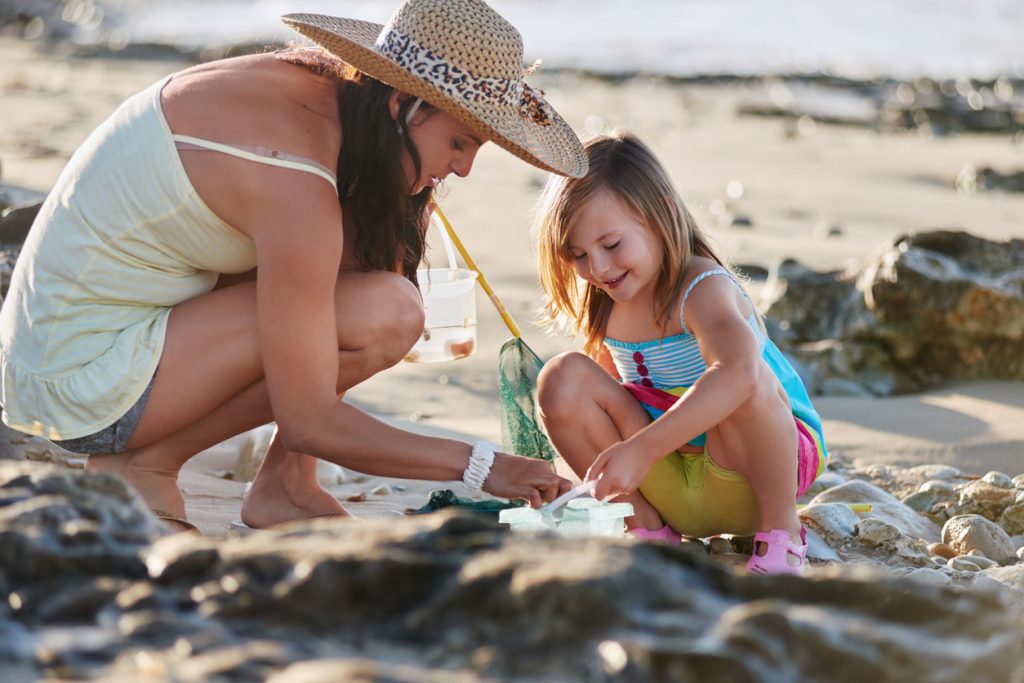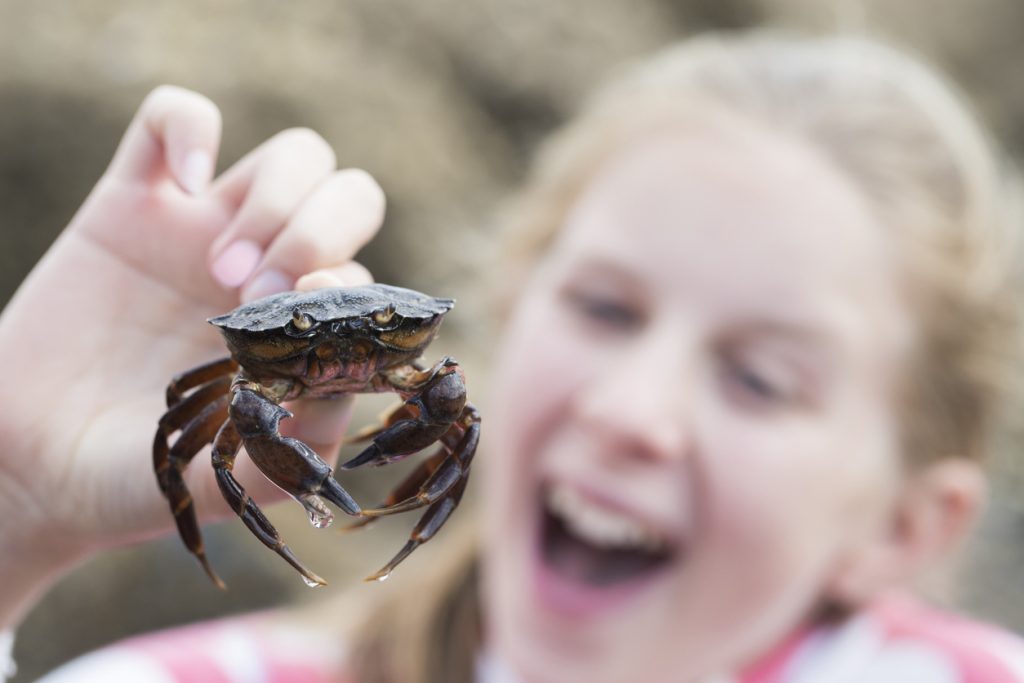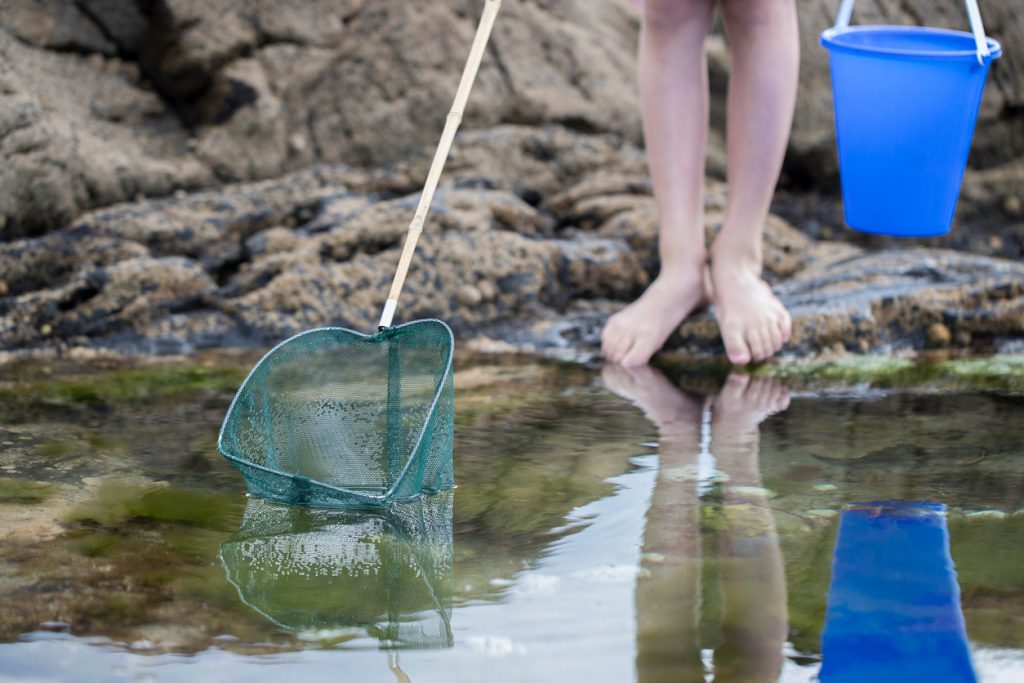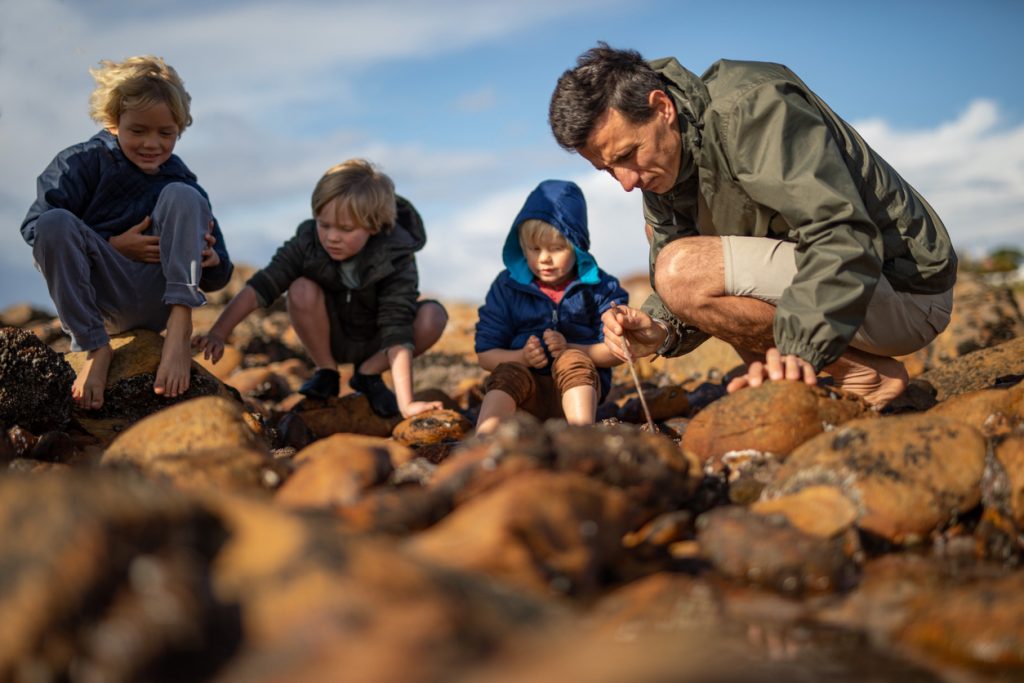Offering the perfect introduction to our blue planet, rock pools provide a window into another world – one teeming with colourful, intriguing life. These special habitats, found along our coast, are places where even the most unenthusiastic youngsters can reconnect with the simple pleasure of interacting with our natural world.
But what exactly are rock pools? What species do they contain? And how can you enjoy interacting with these precious marine habitats safely? To help you get the most from your next rock pooling adventure, we’ve put together a hands-on guide to exploring rock pools.
Quick Links
- What Are Rock Pools and How Do They Form?
- What Species Are You Likely to Find in Rock Pools?
- Where is the Best Place to Find Rock Pools?
- What Should You Bring Along When Exploring Rock Pools?
- Tips for Exploring Rock Pools Safely
What Are Rock Pools and How Do They Form?
Rock pools are small marine habitats that form when the tide goes out on a rocky seashore, leaving water to pool in holes, trenches and crevices. Over time, these pools of water develop into miniature habitats, home to an astonishing variety of plants and animals.
What many people don’t know about rock pools is that they can be tricky places to live. From the heat of the sun to the saltiness of the water, rock pools present a hostile environment – and that’s before you’ve factored in the near-constant threat of being picked off by seabirds.

Given the harsh realities of living in a rock pool, the creatures that inhabit them have evolved in all sorts of clever ways to deal with the conditions. Take blennies, for example. These small fish have learnt to hide under stones or within small cracks when living in rock pools, while their eyes are found on top of their head – perfect for spotting pesky seagulls.
And it isn’t just marine creatures that have adjusted to the realities of rock pool living; the plants which grow in these unusual microhabitats are also perfectly adapted to the conditions. Seaweeds are without doubt the most prevalent plant species found in rockpools, with the combination of sunlight and seawater providing the perfect conditions for growth.
What Species Are You Likely to Find in Rock Pools?
While rock pools may be harsh places to live, that doesn’t mean they’re bereft of life. On the contrary, they’re home to a remarkable array of marine species and plants, many of which prefer life in the pools for the unique food and breeding opportunities they can bring.
Peer into the wonderful, living world of the rock pool, and you might spot a variety of small fish, from gobies and blennies, to pipefish and butterfish. These enchanting pools are also home to a number of crustaceans, which feed on particles of dead animals, algae and plankton, including green shore crabs, porcelain crabs, blue velvet crabs, squat lobsters, prawns, and edible crabs, which are easily mistaken for pebbles.
Molluscs, too, are very common in UK rock pools, with species to spot being winkles, top shell snails, sea urchins, and limpets. You might see predatory anemones too, identifiable by their thin tentacles which spread across the pool, ready to catch their prey.

Where is the Best Place to Find Rock Pools?
While rock pools can occur on any coastline where there are rocks close to the surf, there are a handful of beaches around the UK where exciting rock pool discoveries are all but guaranteed. Let’s take a look at some of the best places in the UK to try rock pooling.
Robin Hood’s Bay, North Yorkshire
Anyone who’s been to the quaint smugglers’ village of Robin Hood’s Bay will attest to its incredible rock pools. The village’s stony beach is the ideal place for rock pooling, with small inlets forming for miles along the ancient coast.
St Helens Duver, Isle of Wight
The Isle of Wight is beloved for its exceptional beaches, and it just so happens it’s a premier spot for rock pooling too. At St Helens Duver beach, there are a variety of large pools for you to explore, which are known to house snakelocks anemones.
Porthdinllaen, Gwynedd
The pretty Welsh village of Porthdinllaen is well known for its attractive beach, but did you know it’s also one of Wales’ foremost rock pool spots? The village’s sheltered waters attract an array of fascinating marine life, with its rock pools home to everything from crabs to lobsters.
These are just a small handful of the amazing rock pool destinations you can visit around the UK. Wherever you live, there’s guaranteed to be a stretch of coast with a handful of amazing pools near you.
What Should You Bring Along When Exploring Rock Pools?
Discovering the hidden wonders of rock pools is a sure-fire way to get youngsters interested in marine animals and our precious coastal habitats. But what should you bring along to ensure an immersive day out on your rock-pooling adventure? Let’s take a look.

- A small net – nets are essential for rock pooling, as they allow you to gently lift marine creatures from their home and into your waiting bucket, where they can be more safely observed. Just remember to put them back where you found them when you’re done!
- A bucket – that’s right, you’ll need a bucket or two for checking out all the amazing animals to be found in rock pools. A white or lightly coloured container works best, so you can easily see what you’re looking at. Be sure to fill it with a couple of inches of seawater first, so that any fish and crabs you catch stay comfortable.
- A notepad and pen – it’s a good idea to draw or take notes of all the creatures you find in a rock pool, so a pen and paper are a must for young explorers.
- Wellies or waders – even on warm days, we wouldn’t want to wade into a rock pool without wellies on, as the water can be very cold. Waterproof shoes with good grip are a must for rock pool exploration.
- A magnifying glass – as we touched on earlier, the creatures found in rock pools can be tiny, so a magnifying glass can help you see these fascinating animals in all their remarkable detail.
- Rubber gloves – you may be more comfortable dipping your hands in rock pools if you’re wearing rubber gloves. They can also help provide some protection from any crabs feeling a little nippy!
Tips for Exploring Rock Pools Safely
We want everyone to enjoy the thrill of exploring the amazing rock pools to be found along our coastline, but it’s important to do so safely. Here are a few tips on how to get the most from your next rock pooling adventure while making sure everyone stays safe:

- Rock pools can be surprisingly deep, so never wade into one unless you can clearly see the bottom. A long stick can help you gauge how deep a pool is.
- It goes without saying, but always check high tide times before setting out on your rock pool adventure. This is particularly important if you’re on a promontory that’s further out to sea than the beach itself.
- Rock pools can be extremely slippery, so always wear shoes or wellies with a good tread.
- Never go rock pooling on your own, and make sure everyone stays with the group. Not only can they be deep, but shifting or quick sand can be hazardous around rock pools.
- Always pack a first aid kit when rock pooling – there’s every chance of a small cut or scrape as you clamber about the rocks and pools.
- Try to plan your rock pool discovery when the weather is dry and calm. Not only will this make for a more pleasant day out, it will also mean the surface of the pools will be still – all the better for seeing the creatures within.
We hope this guide inspires you to get out there and give rock pooling a go. Looking for a drier way to discover amazing marine life? Deep Sea World is open and ready to welcome you for a memorable family day out. For more information and tickets, visit the homepage today.
